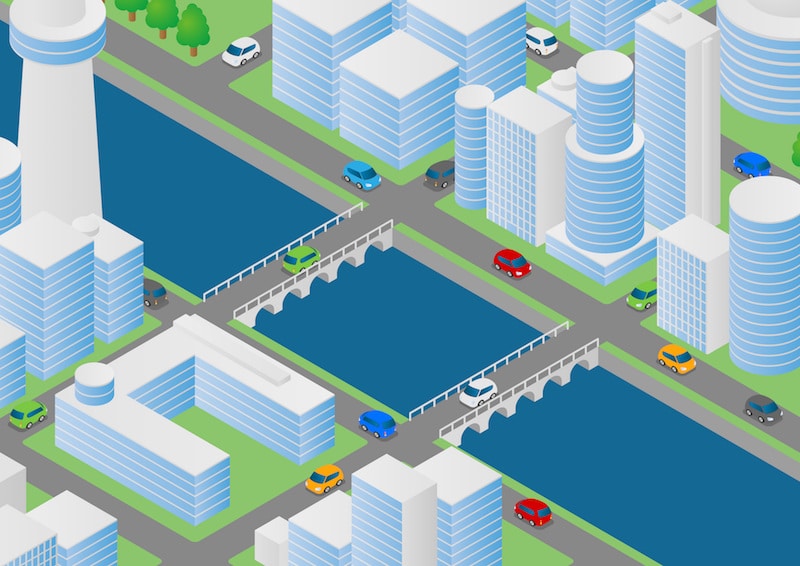A new report from the New Climate Economy finds that investing in smart buildings, public and low emission transport, as well as waste management, in cities could generate savings with a current value of US$17 trillion by 2050. These low-carbon investments could also reduce greenhouse gas emissions by 3.7 Gt CO2e per year by 2030, more than the current annual emissions of India.
From a financial perspective, with complementary national policies such as support for low-carbon innovation, reduced fossil fuel subsidies, and carbon pricing, the savings could be as high as US$22 trillion.

“The steps that cities take to shrink their carbon footprints also reduce their energy costs, improve public health, and help them attract new residents and businesses,” said Michael R. Bloomberg, UN Secretary-General’s Special Envoy for Cities and Climate Change. “This report can help accelerate the progress cities are making in all of these areas, by highlighting smart policies and encouraging cooperation through efforts like the Compact of Mayors”.
The report recommends that cities commit to low-carbon urban development strategies by 2020. It also recommends cities commit to the Compact of Mayors, a global coalition of mayors and city officials pledging to reduce local greenhouse gas emissions, enhance resilience to climate change, and track their progress transparently. More than 130 cities, representing more than 220 million people, have already committed to the Compact of Mayors and will be setting ambitious emissions reduction targets and reporting publicly.
“Better, more resilient models of urban development are particularly critical for rapidly urbanizing cities in the developing world”, said Eduardo Paes, Mayor of Rio de Janeiro and Chair of C40 Cities. “Cities around the world are already leading the way in implementing sustainable and innovative urban solutions. By sharing and scaling-up these best practices through international collaboration, cities can save money and accelerate global climate action".
Measures in the buildings sector represent over half of the urban mitigation potential in the period to 2050. Cities need an estimated 70,000 km2 of new residential floor space by 2030, equivalent to 60% of the world’s current residential floor space.42 Accelerating energy efficiency in new residential buildings is therefore of huge significance, and many cities are accordingly establishing municipal green building codes that far exceed national standards, including Pune in India, San Francisco in the US and Shanghai in China.
Creative policy instruments and innovative financing can help cities overcome barriers to action, the report says. For every US$1 invested in improving the creditworthiness of cities, more than US$100 can be leveraged through private finance for low-carbon urban infrastructure. And every US$1 million invested in project preparation could yield US$20 - 50 million in capital support for successful projects.
New analysis of green building standards in Recife, Brazil, by the University of Leeds indicates that such standards can pay for themselves quickly. If meeting “passive cooling” standards entails incremental investment needs of 3%, investors would recover their costs through energy savings in 6 years in commercial buildings, 7 years in public buildings, and 18 years in residential buildings, where a smaller share of total electricity consumption is for cooling purposes.
[contact-form-7 id="3204" title="memoori-newsletter"]
After paying for themselves, such investments would generate savings throughout the 40+ years of each building’s lifespan. This kind of programme has already been implemented in Singapore, which aims to have 80% of its buildings achieve the Green Mark standard by 2030. This could potentially reduce building electricity use by about 22%, with net economic savings of over US$400 million. These investments to “green” buildings have been estimated to pay for themselves in less than 6 years and have the potential to increase property values by 2%.
The report also suggests that retrofitting existing buildings is just as important to urban climate action as improving energy efficiency in new buildings. Several mature cities have initiated large-scale retrofit schemes to realise the multiple benefits of more efficient buildings. Again, while the direct energy savings are important, unlocking the wider benefits is equally crucial. Although the incremental costs of retrofit can pose a significant barrier to deployment, robust financing mechanisms can overcome these barriers to unlock both the direct economic savings and the wider benefits.
Furthermore, the evidence suggests that innovative green building design and retrofit can yield much broader benefits, including expanding green space, reducing heat island effects, filtering air pollution, and capturing rainwater to reduce demand for piped water. With these kinds of improvements, green buildings are thought to improve pupil learning and teacher satisfaction in schools, support faster recovery rates in hospitals, and improve employee productivity in offices.
Nick Godfrey, Head of Policy and Urban Development at the New Climate Economy and an author off the report, provided context for the report’s analysis. “US$17 trillion in savings is actually a very conservative estimate”, he said, “because it only looks at direct energy savings generated from investment, which are a small proportion of the wider social, economic, and environmental benefits of these investments”.
The report also recommends that the international community should develop an integrated package of US$1 billion or more over five years to help accelerate and scale up low-carbon urban strategies in at least the world’s largest 500 cities.



